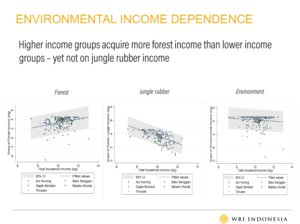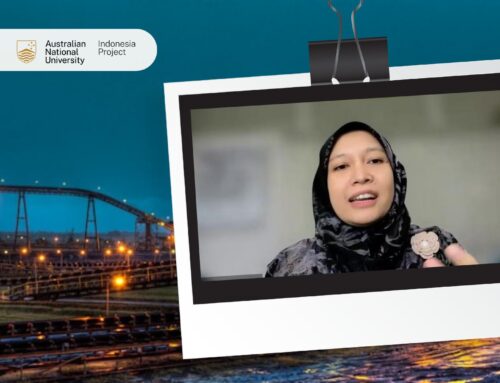On Wednesday, 6 June 2018, World Resource Institute (WRI) Indonesia and Research Center for Climate Change Universitas Indonesia (RCCC UI) jointly hosted the sole FKP Seminar of the month. The main theme of the FKP was social forestry and customary land, and there were five speakers: Dimas Fauzi (WRI Indonesia), Nadia Fitriani (WRI Indonesia) and Sonny Mumbunan (RCCC UI), and Dwiki Ridhwan and Carolina Astri (WRI Indonesia).
The first study aims to evaluate social forestry policy in Indonesia, especially in terms of community forests and village forests and how these forests help in achieving social forestry objectives. Dimas Fauzi opened his presentation by briefly explaining the historical timeline of social forestry policies (policies that allow people to access forest for sustenance) in Indonesia. The monitoring and evaluation tools used covered 11 aspects such as conservation, carbon, welfare, productivity, and others. However, it was deemed that these m&e indicators failed to capture the situation completely. Through desk analysis, survey, FGDs, and in-depth interviews with related stakeholders, this study hopes to fill the knowledge gap from existing monitoring and evaluation tools. The study sites were at Simancuang Village Forest and Beringin Jaya Community Forest in West Sumatra Province.
The second study was presented by Nadia Fitriani and Sonny Mumbunan on the income and inequality aspects in indigenous communities. The researchers sought to measure household income dependence on forests and the environment; explore changes in behavior towards forests at different levels of household income, and measure impacts of forest and environmental income on inequality. The study took place at Rimbang Baling Wildlife Reserve in Riau Province, where they randomly selected 233 respondents from 5 villages (representing 35% of all population on Rimbang Baling Wildlife Reserve). Using descriptive analysis, correlation analysis, and OLS Regression, the study found that environmental income (forest-based and river-based) accounted for 75% of total household income. Richer groups acquired more forest income compared to poorer groups – but found the reverse to be true when it comes to income from jungle rubber. The study also found that environmental income was associated with income inequality.
Finding on Mumbunan and Fitriani study on inequality in social forestry.
The last study was presented by Dwiki Ridhwan and Carolina Astri on mapping indigenous communities land. The objective of this study was to observe how village communities perceive the One Map Initiative (a national program to build one official map of Indonesia) at the village level. The study was conducted at Gajah Bertalut Village in Rimbang Baling Wildlife Reserve. The study found that indigenous people in this village were unaware that their village was included as a part of the wildlife reserve site. This is further complicated by the fact that the village also holds customary forest status. Although the community was willing to follow government forest regulations, they also demanded to be facilitated in managing natural resources and in keeping their customary use of the forest.
For the complete presentation and Q&A session, please refer to the videos and materials provided.
Featured Image by WRI Indonesia





